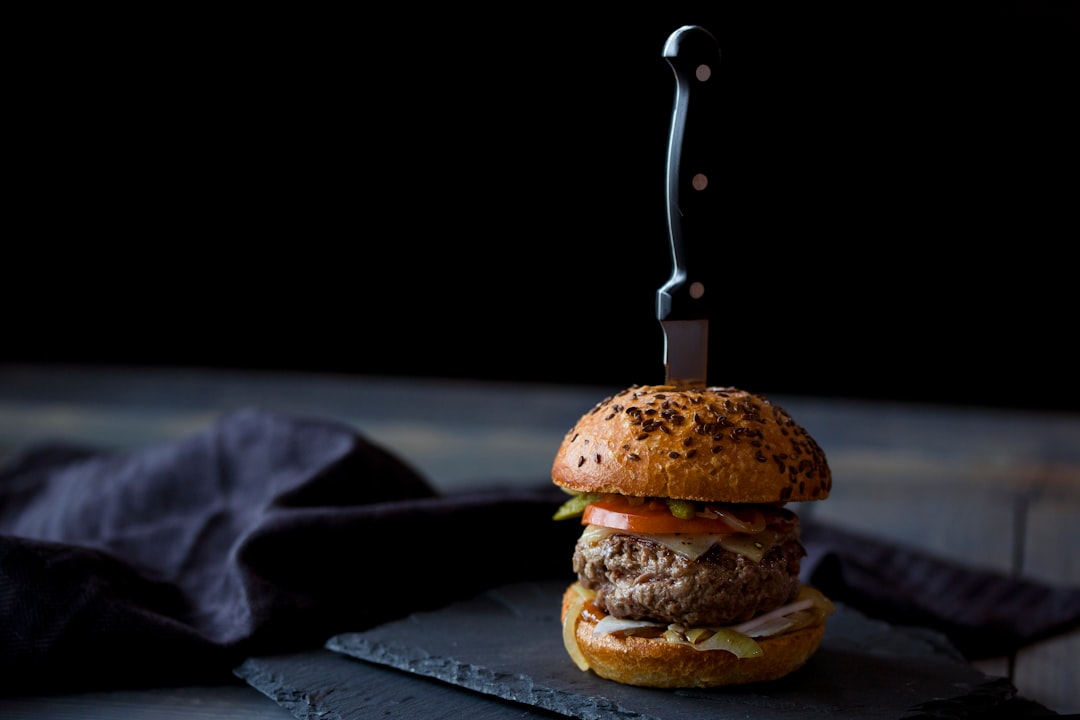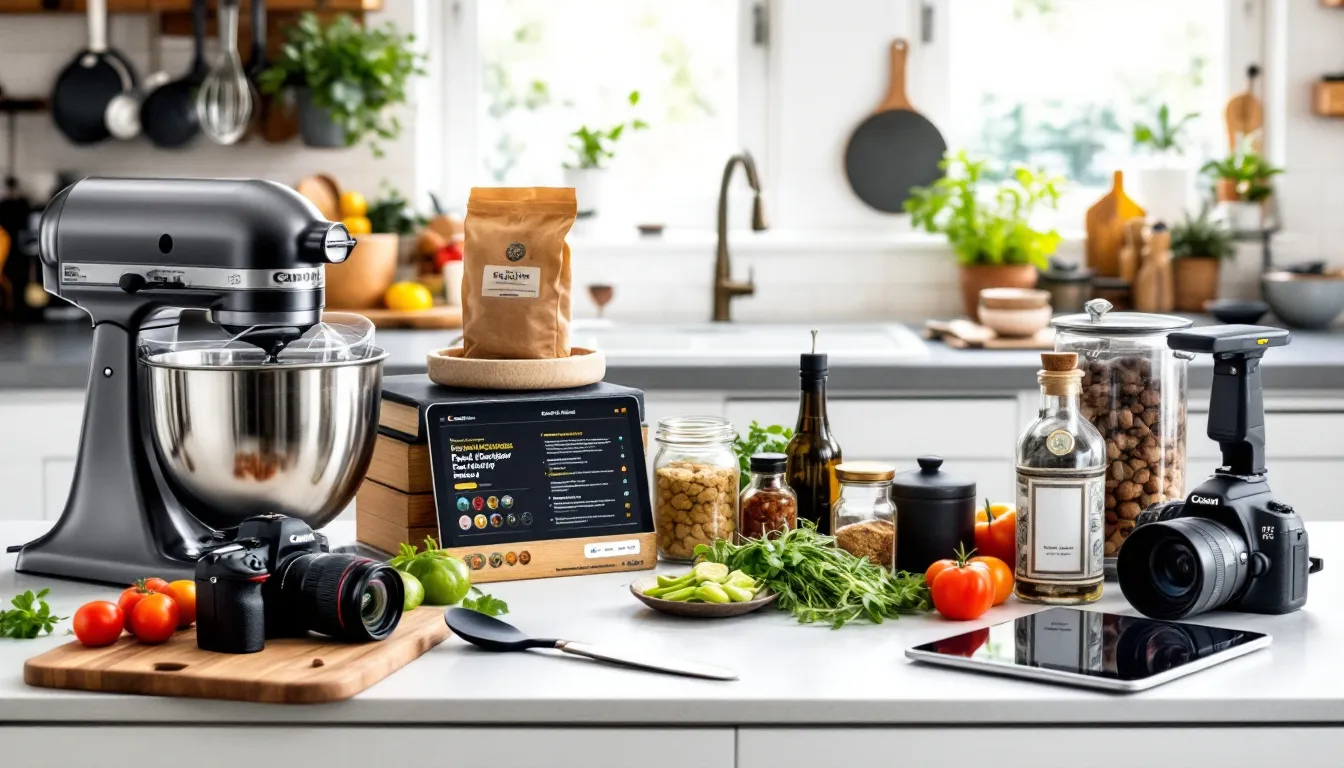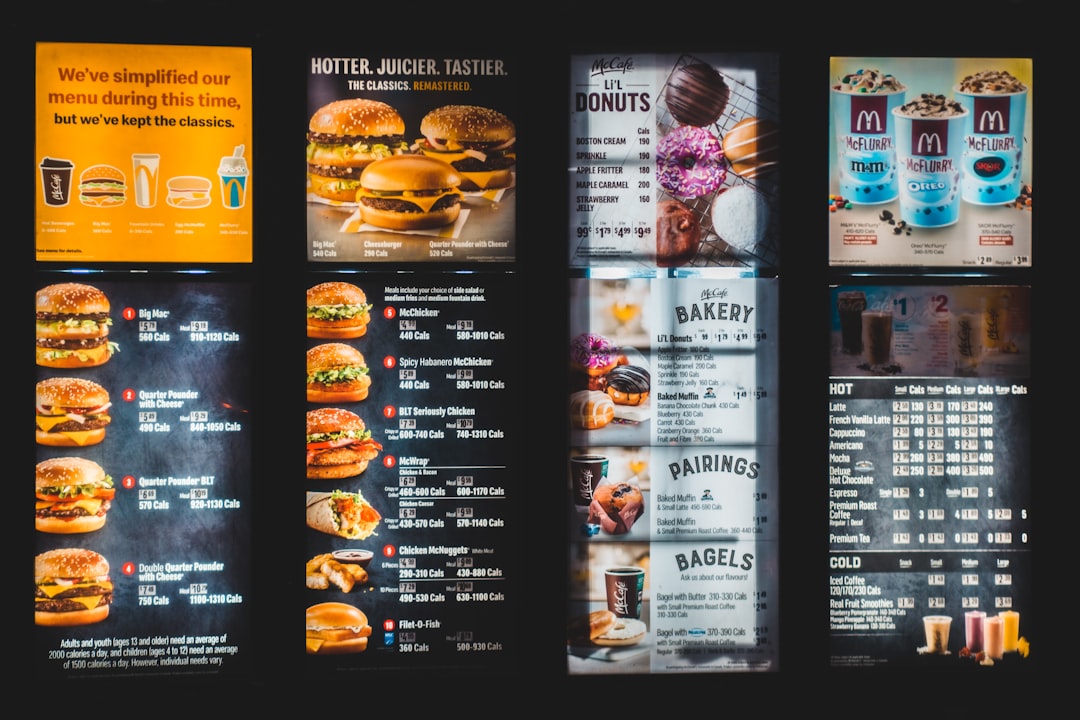
How to Make Money from A Food Blog: Top Strategies and Tips
Looking to learn how to make money from a food blog? This article explains effective strategies like advertising, affiliate marketing, and sponsored posts. Discover how you can transform your passion for food into a profitable business.
Key Takeaways
- Food bloggers can earn between $35,000 and $125,500 annually, with success hinging on audience size and diverse income streams.
- Key monetization strategies include display advertising, affiliate marketing, sponsored posts, and selling eBooks or online courses.
- Building a strong personal brand through high-quality content and consistent social media engagement is crucial for growing your audience.
How Much Do Food Bloggers Earn?

The income of food bloggers varies widely, from a few hundred dollars to tens of thousands per month. Some even earn over $100,000 in their first year of full-time blogging. Key factors influencing earnings include audience size, partnerships, and the number of revenue streams.
Maintaining realistic expectations is crucial. Building a successful blogs requires time, dedication, and effort. However, with the right strategies, significant steady income is achievable.
Average Earnings
On average, successful food bloggers can earn between $35,000 and $125,500 annually. Factors such as expertise, geographical location, and years of experience play a significant role in determining income. For instance, Tiffy Cooks, a well-known food blogger, has an average monthly income ranging from $45,000 to $55,000.
A full-time income from food blogging is within reach with dedication. High-quality content, well-tested recipes, appealing photography, and engaging stories are vital for a successful food blogger. Proper legal structure and financial management are also key for a full time food blogger. If you’re interested, you can start a food blog to share your culinary journey.
Success Stories
Numerous food bloggers have turned their passion into thriving businesses. For example, Tiffy Cooks earns between $45,000 to $55,000 monthly, which is much money for many. Pinch of Yum reaches up to $90,000 monthly and has created a course, Food Blogger Pro, to help others succeed.
Rosie Alyea is another shining example. She turned her food blog into a successful baking business. These stories prove that with the right approach, food blogging can be both a passion and a profitable venture.
Monetization Strategies for Food Blogs
Diversifying various income streams is crucial for food bloggers. Employing various monetization strategies creates a more resilient business model. Key methods include display advertising, affiliate marketing, sponsored posts, and selling eBooks and online courses.
Effective monetization boosts earnings and allows for more investment in your passion while earning money and can help you generate revenue.
Display Advertising
Display advertising is a common way for food bloggers to earn money through ad networks. Earnings are generally based on CPM (cost per mille) or CPC (cost per click). Google AdSense is a reliable starting point for beginners.
Incorporating video ads and selling website ads directly to businesses can boost earnings and help generate more money. Optimizing ad placements in the header, sidebar, and body of the text also enhances earnings.
Affiliate Marketing
Affiliate marketing is another effective way to make money. Promote products with affiliate links on your blog, making money when readers make purchases. Sign up for programs like Amazon and use special links for recommendations.
Tools like Tasty Links simplify managing and inserting Affiliate Link. Always disclose affiliate links to your audience as per FTC guidelines.
Sponsored Posts
Sponsored posts involve partnering with brands to promote their products or services. A sponsored post may be created when brands reach out to you, or you can contact them directly.
Promote brands you genuinely love and disclose payments as per FTC guidelines. Sponsored posts can significantly contribute to your income, often accounting for about 65% of total earnings.
Selling eBooks and Cookbooks
Publish cookbooks, either as e-books or printed versions, by leveraging your recipes and audience to develop unique recipes. Compiling your best recipes into a cookbook offers a straightforward way to create and sell a product.
Self-publishing is widespread, with platforms like Amazon and Kobo facilitating the process. Selling e books and offering promotional discounts on eBooks can attract more buyers and boost sales.
Online Courses and Workshops
Online courses and workshops offer another fantastic way to monetize your own food blog. Many bloggers, like Pinch of Yum, have developed courses to help new bloggers succeed. A structured curriculum and step-by-step tutorials enhance appeal.
Live cooking classes add value and can be filmed for video content.
Additional Revenue Streams for Food Bloggers

Diversifying income sources is key to generating a full-time income from your food blog and securing a full time job. Additional ways to make money include membership sites, freelance services, and merchandise sales.
With time and effort, a food blogger can earn enough to do it full-time, which is what food bloggers make possible. Personalized meal plans and organizing food tours are other innovative monetization methods.
Membership Sites
Membership sites offer exclusive content to subscribers for a recurring fee, generating consistent income. Exclusive content may include new recipes, meal plans, detailed cooking tutorials, and behind-the-scenes insights.
Platforms like Patreon and Buy Me a Coffee help manage memberships. Target specific subscriber numbers to achieve revenue goals.
Freelance Services
Freelance services like recipe development, food photography, and consulting services can provide additional income. Bloggers can charge up to $150 an hour for consulting and $328 or more monthly for recipe development.
Showcase your work, add a services page, use social media, and network to attract clients. Freelance food photographers can earn between $300 to $10,000 per project.
Merchandise Sales
Creating and selling unique kitchen tools that align with your brand can be profitable. Print-on-demand services manage production and fulfillment. Selling t-shirts can yield a profit of $13 per shirt.
Co-branded products with existing brands can expand your reach.
Essential Tools for Successful Food Blogging

Investing in the right tools is crucial for successful food blogging. Ensure your own site looks professional. Platforms like Shopify, Squarespace, and WordPress can help you purchase and host a new domain.
Canva is recommended for creating visually appealing graphics and marketing materials. A good camera is essential for capturing quality photos and videos.
SEO Plugins
SEO (Search Engine Optimization) is crucial for food blogs to improve visibility in search engine results. Several SEO plugins can assist in optimizing your site, managing keywords, meta descriptions, and other important elements.
Plugins like Yoast SEO and All in One SEO Pack offer tools to enhance on-page SEO, resulting in better search engine rankings.
Social Media Management Tools
Social media management tools streamline scheduling and posting content across multiple platforms. This ensures consistent engagement with your audience and helps build a strong online presence.
Effectively managing your social media channels promotes your blog and reaches a wider audience.
Email Marketing Software
Creating a newsletter to share free recipes and engage your audience is a powerful tool to help you create content. Offering an email signup module enhances your blog and helps build your mailing list.
Share in-depth tutorials on specific topics like baking through email marketing to keep your audience engaged.
Tips for Growing Your Food Blog Audience

Building a strong personal brand and an engaged audience is crucial for effective monetization. Consistent social media management significantly increases audience interaction and blog traffic.
Effective email marketing helps maintain ongoing relationships with your audience, improving loyalty and engagement.
High-Quality Content
Well-crafted recipes can improve your blog’s credibility and attract a dedicated following. This is a great post, as engaging narratives and striking images enhance reader connection and retention.
High-quality content keeps your audience engaged and encourages return visits.
Consistent Posting Schedule
Maintaining a consistent posting schedule engages your audience and encourages return visits. Consistency builds loyalty, drives traffic, and improves search engine ranking.
Leveraging Social Media
Pinterest, Instagram, and TikTok are recommended for many food bloggers. Engaging with your audience helps build a community around your blog.
Social media is essential for promoting your own blog and reaching a wider audience through a blog post.
Summary
Summarize the key points discussed in the article. Reinforce the importance of diversifying income streams and investing in essential tools. Encourage readers to take actionable steps to grow their food blog and turn it into a profitable venture.
End with an inspiring message, motivating readers to pursue their passion for food blogging and achieve success.
Frequently Asked Questions
How much can I earn as a food blogger?
You can earn anywhere from a few hundred dollars to over $125,000 a year as a food blogger, depending on your success and engagement. The potential is there, so it’s all about finding your niche and growing your audience!
What are the best monetization strategies for food bloggers?
The best monetization strategies for food bloggers include display advertising, affiliate marketing, sponsored posts, and creating eBooks or online courses. These methods can help you effectively turn your passion into profit!
Do I need a professional camera for food photography?
You don’t necessarily need a professional camera for food photography; even a basic camera can produce great results. Just focus on lighting and composition to elevate your shots!
How can I grow my food blog audience?
To grow your food blog audience, prioritize high-quality content and stick to a consistent posting schedule. Don’t forget to harness the power of social media platforms like Pinterest, Instagram, and TikTok to reach more people!
What tools do I need for successful food blogging?
To kickstart your food blogging journey, invest in professional design tools, SEO plugins, social media management platforms, and email marketing software. These essentials will help you create engaging content and grow your audience effectively.
